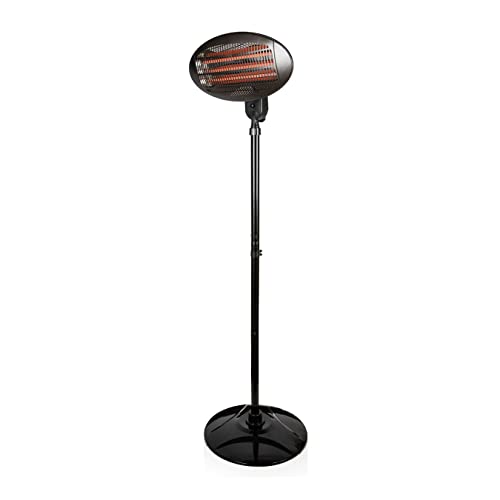There's A Reason Why The Most Common Patio Heat Lamp Electric Debate Actually Isn't As Black And White As You Think

How to Choose a Patio Heat Lamp Electric
There are many options available when you want to heat your patio. Electric heaters are more convenient than propane models, which require refueling. They can be heated instantly by pressing a button, or flicking a switch.
They also don't release gasses that might cause health risks. Some units have adjustable heat settings to accommodate varying distances.
Heater Type
You can enjoy your outdoor living space all through the evening and throughout the seasons by using the right patio heater. Patio heaters come in many different types, including freestanding propane or natural gas models and ceiling or wall mounted electric radiant heaters. Your choice is contingent on the size of your patio, existing power sources and personal preference.
The majority of patio heaters use electricity, liquid or natural gas to generate heat. They release heat through convection heating as well as radiant heating. The heat output of patio heaters is measured in watts, which can be converted into British thermal units (BTUs) to give a comparative. Some models have adjustable heating settings for greater flexibility.
Patio heat lamps combine the use of a burner that is mounted on a pole and a perforated screen that reflects flames and sends heat downwards to warm objects, people and furniture. Some have an reflector on top of the burner that can be silvered to reduce the amount of heat emitted upwards.
Gas patio heaters are the most popular patio heaters. They can heat several tables quickly and evenly. These patio heaters are portable and can run on propane tanks or be plumbed in to your natural gas line. The latter is more convenient and has lower initial costs, but requires fuel.
Gas patio heaters are becoming increasingly popular as more homes have natural gas lines. These heaters are easy to install, but they require an appropriate gas line properly installed and working to ensure safety. There are portable natural gas heaters that come with extension hoses that help overcome this restriction however they can also pose a tripping risk and a fire risk when not in use.
Safety
Electric patio heaters can be used in covered areas, as they allow heat to radiate upward and not outward. However, they're not designed to be used under an open roof. The heater should be placed at minimum 18" from adjacent walls or 6" from the ceiling to prevent fire hazards.
The propane and gas patio heaters are only suitable for installation in enclosed areas that are fitted with a durable cover specifically designed for outdoor use. These types of covers are typically made of fire-resistant canvas and come with an open roof that can be closed. The safety concerns associated with these kinds of outdoor patio heaters is due to the flame and fumes they emit. They should be kept away from flammable objects, such as curtains and chairs.
Follow the safety and instructions measures of the manufacturer before installing a patio heater or patio heat lamp. Choose Best electric patio heaters uk that has received UL and CSA safety certifications and be sure to go through the owner's instruction manual thoroughly. Make sure the heater is out of the reach of pets and children. Some free-standing patio heating devices, such as EUROM's, include a tipping safety feature that shuts down the device when it falls.
If your patio heater is connected to a natural-gas line, it is recommended to examine it regularly and have it tested by a qualified professional for leaks. If the line has to be replaced, make certain to get a licensed plumber. A professional can determine whether the line is properly routed or if it should be run through an underground pipe. In addition, a professional can also make sure the patio heater is plugged into an outlet that's GFCI (ground fault circuit interrupter) certified to guard against electrical fires and shocks.
Installation
The size of a patio heater will determine the amount of heat it emits into the room. The heater should be placed away from surfaces like wood and plastic that can deform. Depending on the model of heater you can decide to place it on a wall or a structure using standard mounting brackets. Some models have a soft start, which reduces peak current in order to protect your circuits.

